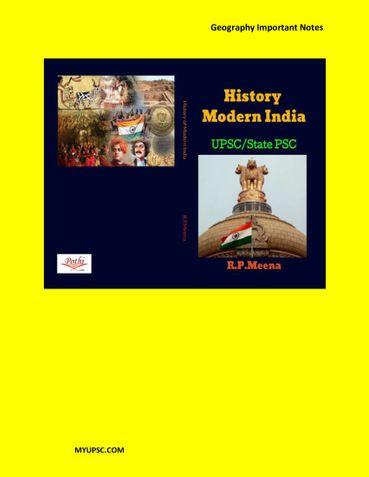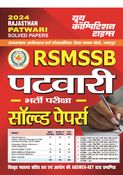You can access the distribution details by navigating to My pre-printed books > Distribution
Description
Modern History is one of the most important topics in history and questions from this section always make it to the competitive exams. A good understanding of this section is essential to qualify competitive exam such as UPSC, SSC, and CAPF etc.
Modern History of India
The phase of Modern history in India begins with the decline of Mughal Power in the early 18th century. With the decline of Mughal Power, many centres of power developed to occupy the power vacuum in India. Among these powers, Maratha was one of the promising Powers which could have found the next empire in India but the defeat of Maratha in the second battle of Panipat washed away their hopes to form a pan Indian Empire. The subsequent rise of the British after the battle of Buxar didn’t provide any further avenues to any other power and slowly and steadily annexed various smaller states in India to become a pan India Empire.
India in the Eighteen Century
The India of the Eighteen Century was in a chaotic state. Various power centres were fighting among each other oblivious of a foreign enemy which was going to take control of their motherland and was going to subjugate the whole Indian Subcontinent for the next 250 years. During Eighteen Century various wars were fought but the three decisive battles sealed the fate of India in the hands of the British Empire. The 3rd battle of Panipat, The battle of Plassey, and the battle of Buxar changed the power dynamics in the Indian subcontinent.
Topics Covered Under India in the Eighteen Century
• Decline of Mughal Empire
• Rise and fall of Maratha
• Mysore wars
• Coming of Europeans in India
• Anglo - French Struggle
• Expansion of British Empire
The beginning of British political sway in India can be traced from the battle of Plassey. With the annexation of Bengal and establishing their strong foothold in Bengal. The British power felt confident to replicate the same to annexed maximum territory in India. As per their policy of Ring Fence they used annexation through wars or subsidiary alliance to control the empires surrounding the borders of Bengal. But with each success, British Empire got more confident and continued further expansion which finally stopped in 1958 when the British Crown took over Indian Empire.
Topics Covered Under Expansion of British Empire
• British occupation of Bengal
• Annexation Policies
• Annexation under various Governor General
• Economic Policies of British Empire
The primary aim of the East India Company was to extract as much wealth from India as possible. The economic policy of the British was tuned to achieve this primary objective. With the establishment of British rule in India, The Britishers tried to dismantle the indigenous industries in India and converted India into a market for British goods and a supplier of raw material to fuel the growth of Industries in Britain.
Topics Covered Under Economic Policies of British Empire
Economic policies in India
Land revenue system
Drain of Wealth Theory
Development of means of Communication and Transport
Administrative Organization in British India
After having annexed the vast territories in India, The Britishers organized a government structure in India. The main objective of the Government of India was to maintain the law and order so that trade with India and the exploitation of its resources can be done without disturbance. The government structure helped in fulfilling the primary objective of economic exploitation of India and curbs any dissent in its bud before taking the shape of a massive revolution.
Revolt of 1857
The revolt of 1857 also called the First War of Indian Independence was much more than a sepoy mutiny. It was the Indian expression to the most-hated foreign regime. The hatred towards the foreign regime grew over the years due to its policies of annexation and subjugation of Indian kingdoms, economic exploitation of the country.
Religious and social Reform Movement
The British Empire brought with it the western culture. Western conquest exposed the weakness and decays of Indian Society and some thoughtful Indians show this as the reason of their subjugation by the Britishers. They were highly impressed by the progress made by western society due to their scientific temper and humanism. These Indians tried to reform the Indian culture as they believed fighting the vices of Indian Society is the first step in throwing away the yoke of imperialism.
Early Nationalism
Nationalism in India arose to fight the challenges of foreign dominance. With time Indians begin to realize an inherent clash between the interest of people of India and the British Interest. Many intelligent Indians the root cause of Indian problems are the policies of the Indian government that are meant to promote the interest of Britain. This realization led to the formation of a various political organization which resulted in the formation of Indian National Congress in 1885.
National Movement (1905 to 1919)
National Movements in the year 1905 to 19019 is considered as the first phase of mass revolution in the struggle towards achieving Indian Independence. It started with the Swadeshi movement against the partition of Bengal. Violent militant nationalism also rose during the period as a result of the failure of the moderates to convince the government of India about their various demands. The period also witnessed the split of Congress and its unification in 1917. Various important movements like the Ghadar movement, Home rue League movement also took place during this period. All these episodes formed the base which gave Indians strength to participate in bigger movements under the leadership of Mahatma Gandhi.
National Movement (1919 to 1939)
The second phase of National Movements from 1919 to 1939 is the launch paid where the dreams of Indian Independence took off. The Non – Cooperation movement of the early 1920’s, the civil disobedience movement of the 1930’s, the roundtable conference and the victory of Congress in the provincial election of 1937 prepared the ground for the final battle of Indian Independence.
Freedom and Partition (1939 – 1947)
The third and the last phase of the National movement from 1939 to 1947 threw away the yoke of foreign rule and India gained its Independence after a long struggle of around a century. The Quit India movement and the support of Indians during the trial of the prisoners of Indian National Army was the final nail in the coffins of the British Empire. India got Independence in August 1947 but the seed of divide and rule has resulted in two nation-states India and Pakistan.
Administrative Changes After 1857
The revolt of 1857 brought the discontent against the British Empire to the forefront and to further continue ruling India, Britishers could not have continued the same way. They need to pacify the people of India. To this end, they brought legislative reforms, reforms in Police and Judiciary. These reforms were aimed to prevent any repeat of 1857 revolt but at the same time promote the interest of British India
Development of Indian Press
Press is one of the most important media to create awareness among the people. During the struggle for Independence, the freedom of the press has been gagged many times to prevent the spread of nationalist sentiments among the masses. The development of Indian press has been shaped by various regulations such as Censorship of press act 1799, licensing regulation 1823, Press Act 1835, Registration act 1867, Vernacular press act 1878 etc.
Book Details
Ratings & Reviews

Currently there are no reviews available for this book.
Be the first one to write a review for the book History of Modern India.
Other Books in Exam Preparation
YCT Expert Team
Y VIJAY KUMAR SWAMY
Jot Chahal




